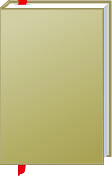

 |

|

The average rating for Teaching in the 21st century based on 2 reviews is 4 stars.
Review # 1 was written on 2017-01-27 00:00:00 Julian Strahan Julian StrahanThis book is incredibly valuable for current teachers, potential teachers, and especially for beginning researchers on teaching. The bibliography is a little dated time-wise, but it is still relevant. I'm a huge fan of libraries, but if I continue research in this vein at all, this is a book I will buy. |
Review # 2 was written on 2012-09-15 00:00:00 Danielle Gaskin Danielle GaskinMuch like its companion volume related to speaking and listening, this is a fairly user-friendly text for ESL and EFL teachers in terms of some basic principles for teaching both skills -- it also offers a range of techniques and ideas for addressing those skills in the classroom. Much like its companion volume, also, it does a great job of offering ideas in isolation but then rarely goes to the lengths of telling you how to combine them together for its suggested four strands approach. In case you are wondering what is in the book, here is a quick summary of chapter titles below -- Chapter 1: Learning to Read in Another Language Chapter 2: Learning to Recognize and Spell Words Chapter 3: Intensive Reading Chapter 4: Extensive Reading Chapter 5: Reading Faster Chapter 6: Assessing Reading Chapter 7: Helping Learners Write Chapter 8: The Writing Process Chapter 9: Topic Types Chapter 10: Responding to Written Work (Feedback) As you can see above, most of this material (over 50%) addresses reading and this is the book's strongpoint in my opinion. It has a lot of good, succinct information about reading research both in first language and second langauge settings; in addition, it addresses various ways you can approach and teach reading in the classroom. In this case, you would likely focus on intensive reading and reading faster as extensive reading is meant to be done outside of class. The most noticeable flaw for me about this section was the lack of explanation about how to make and get an extensive reading program off the ground in practical terms -- that is, buying the books and organizing the actual library for the classroom in question or if this is even feasible in many teaching situations when money is limited. On the other hand, the writing section feels rushed in comparison and scanty in information. There is some basic information about the writing process and topic types, but it is probably information you already know if you have gone through years and years of instruction in school. The best parts were Chapters 7 and some of the material in Chapter 10 in this section (for me anyhow). This is the second of five books I have self-imposed on myself as self-study in my final trimester here in New Zealand. The other three are "The Grammar Book," "Learning Vocabulary in Another Language," and "The History of the English Language." Hopefully these volumes will fill some immediate holes in my knowledge and suggest future ideas for reading and teaching. I know for sure I will be reading "Second Language Writing" by Ken Hyland to make up for some of the gaps in this text about the subject. |
CAN'T FIND WHAT YOU'RE LOOKING FOR? CLICK HERE!!!